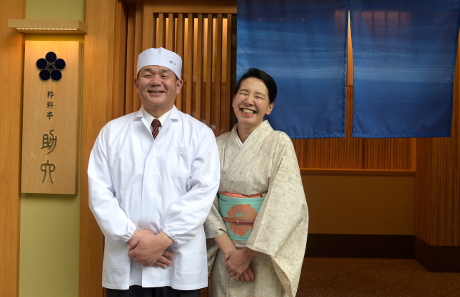

It is second only to the prefectural capital of Gifu in population as well as being the center of activity in the Nishino region.
The sediment found in the ancient rivers of Kiso, Nagara and Ibi have transformed the famous “Mizu no Miyako” Ogaki into a giant groundwater basin. This bountiful basin is a blessing to the surrounding region providing it with a wealth of water throughout the charming rivers in town. Ogaki was once a prosperous port due to its close proximity to surrounding rivers such as the Ibi, Suimon and Kuise.
The Japanese Government acknowledged the cities attempts of preserving the ground water and its surrounding nature by naming Ogaki as one of the “100 Mizu no Miyako of Japan” The city got its name “Ogaki” in 1340 from the older reading of Ogaki (大柿) in the “大井荘華厳会料名寄帳” (a historical document) which is used interchangeably with today’s reading (大垣).
In 1535 Ogaki castle was constructed and was the base for western general Mitsunari Ishida during the battle of Sekigahara in 1600.
You can enjoy the water from the “mizu no miyako” in Ogaki.
You can also take in the view that Basho Matsuo once loved down the river.
Furthermore, Ogaki is known to be the end of Basho Matsuo's ”The Narrow Road to the Interior” This can be viewed as the history at the Basho's Oku no Hosomochi Haiku Journey Museum.
This is what Ogaki is like. Naoto Nakamura first opened the “Four Seasons Sukeroku” in Ogaki in 1950 and our family has been operating the restaurant for three generations. The founder was largely interested in traditional Kabuki and named the restaurant after “Sukeroku Yukarino Edo Zakura,” (Sukeroku: Flower of Edo) one of the Eighteen Best Kabuki Plays. Since opening, 63 long years have passed here in Ogaki, but thanks to the love of those who visit, we continue to be able to serve our customers. The head chef Hideyuki Nakamura and proprietress Chikage Nakamura hold to the following three principles:
• “Hold to the customs of traditional Japanese restaurants”
• “Continue to do our part in passing on Japanese culture”
• “Become the cultural representatives of Seino”
Our proprietress also arranges the flowers in each of the rooms and the entranceway every morning with a variety of flowers that changes according to the season. The hanging scrolls decorating each room are also varied to match the situation, whether that be a celebration, a funeral, traditional events, or simply the change of the season. We even feature seasonal paintings and pottery made by local artists.


We provide banquets using seasonal foods in a bright, vibrant color scheme. We invite you to enjoy the wide variety of tastes and colors which each different season has to offer.
One of our restaurant’s famous items is our “bamboo sake.” Served in a chilled piece of cut bamboo, this locally-made sake gives off a faint bamboo scent. We also have a wide selection of Japanese sake which even those who have never tried it before may enjoy.








